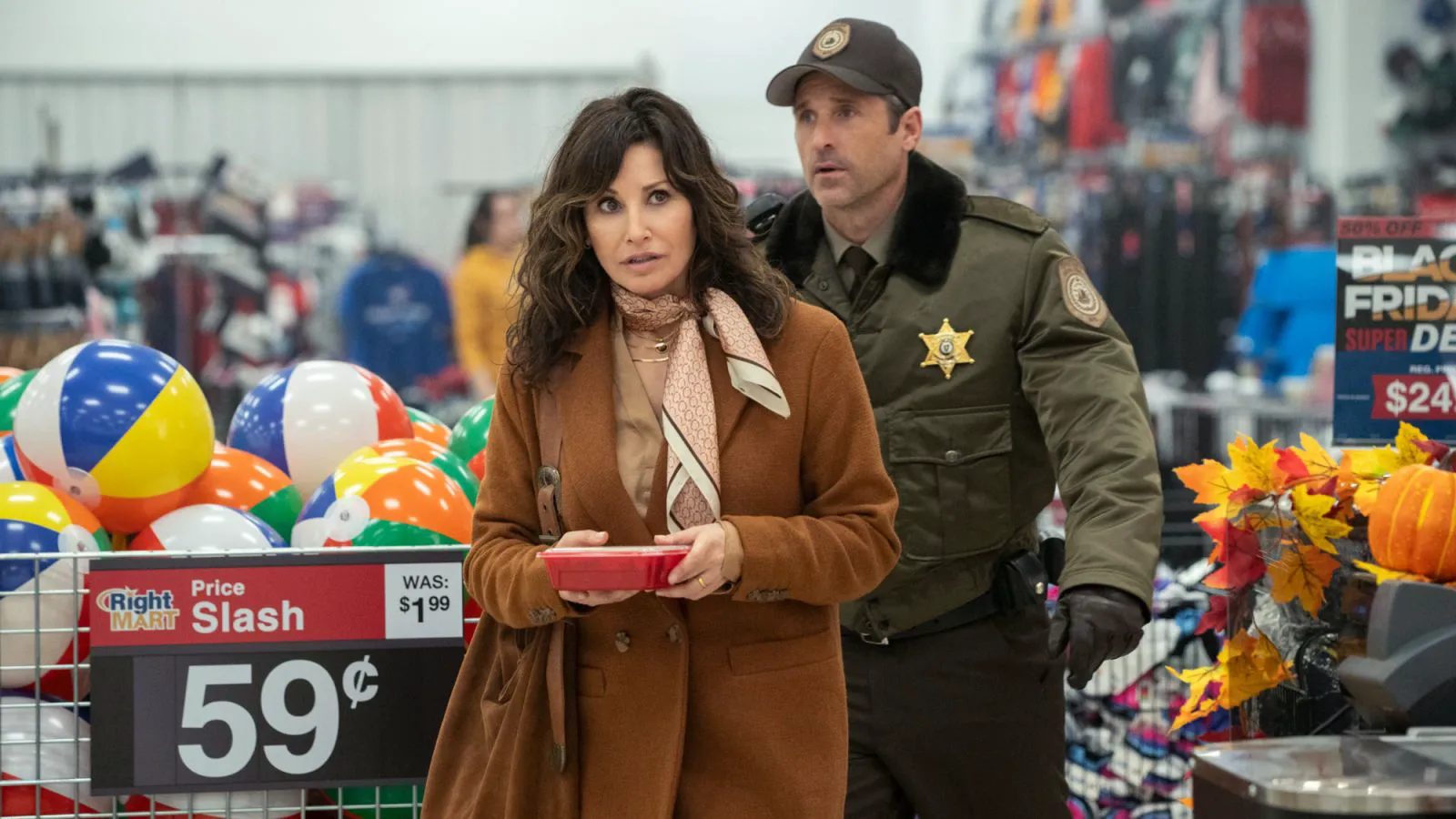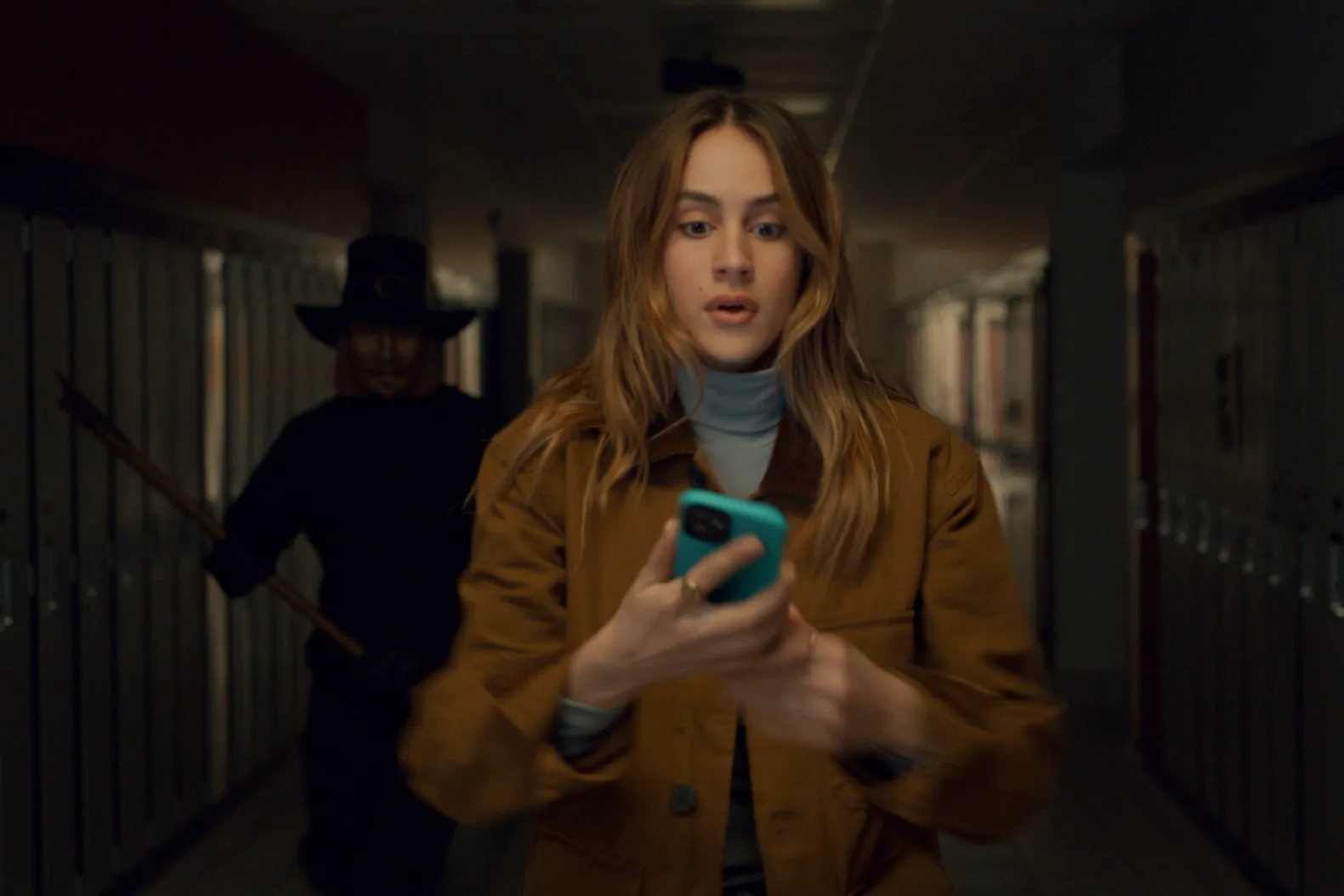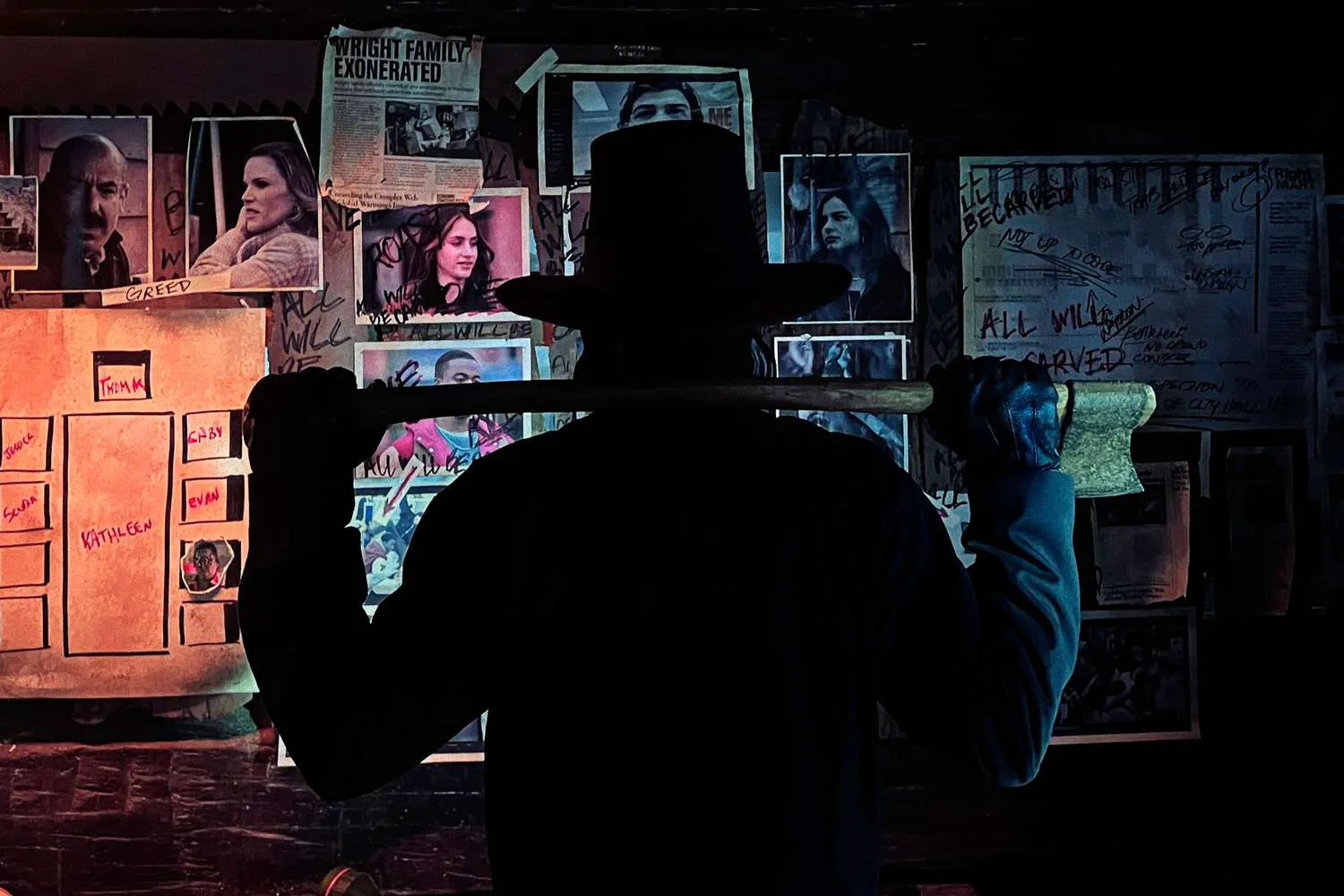In the frenzy of “Black Friday,” a ravenous crowd storms into the Right Mart shopping center, trampling not only merchandise but also people in their wake. This Thanksgiving, the residents of Plymouth will remember for its senseless deaths. On the anniversary of the tragedy, a masked maniac emerges, terrorizing the teenagers involved in the carnage, particularly Jessica (Nell Verlaque), the daughter of the shopping center’s owner. Suspicion falls on Bobby (Jalen Thomas Brooks), Jessica’s ex-boyfriend, who vanished after the bloody events. Meanwhile, the youngsters receive eerie notifications from the killer on social media: a lavish Thanksgiving feast. It seems this holiday will be marked by more than just traditional sales.

Patrick Dempsey as Eric in a still from “Thanksgiving”
A Grindhouse Legacy
For devotees of the peculiar cult of “cheap exploitation cinema,” the story of “Grindhouse” has become legendary. Quentin Tarantino and Robert Rodriguez’s project, offering two films for the price of one (“Death Proof” and “Planet Terror”), was somewhat niche in its appeal, questionable for the average viewer, and a box-office flop. Yet, it sprouted interesting offshoots even in barren soil. The fake trailers that accompanied the double feature didn’t fade away but evolved into full-length movies. Rodriguez directed “Machete,” followed by Jason Eisener’s “Hobo with a Shotgun,” and now Eli Roth attempts to convince us that stringing intestines onto a reel is still fun. That collection of stylized trailers, absurd yet deeply ingrained in the minds of bad-taste aficionados, no longer seems like a fleeting joke—it’s a prank that has spiraled out of control. And the mock slasher “Thanksgiving,” spun from Roth’s twisted imagination into a two-and-a-half-minute spectacle, was perhaps one of the wildest entries.

Still from “Thanksgiving”
Eli Roth’s Return to Horror
A few words must be said about Eli Roth himself. His influence on horror is often met with lazy disdain, but it was Roth who, with “Cabin Fever” and both “Hostel” films, shaped the hazy landscape of the genre in the 2000s. When horror grew scarce and left behind fields of self-parody, Roth eagerly continued Wes Craven’s work. He approached the genre boldly, humorously, mocking the common trope of dangerous rednecks or cautiously unveiling the dark underbelly of Europe and its hospitality. He knew how to pay homage to the classics and entice newcomers to the genre. Back then, “Saw” set the trend, and Roth understood what bread and circuses to offer viewers hooked on the sharp needle of torture porn.

Nell Verlaque as Jessica in a still from “Thanksgiving”
A Familiar Feast of Horror Tropes
Watching “Thanksgiving” is like sitting down at a familiar table setting. Teenagers, as is typical in the genre, pair off into romantic couples—a tired trope, if not a faux pas. The on-screen murders, reckless and brutal, are presented in the tradition of 70s slashers, without excessive inventiveness or creative flourishes—everything is arranged into a montage of genre thrills: axe, cut, guts. The bloodbath descends upon Plymouth, of course, during the holiday—a dogma we remember from “Black Christmas,” “Halloween,” and “My Bloody Valentine.” The tradition of silly masks continues—they all suit killers, as we know, and the one here is dressed rather comically, with a nod to the Pilgrim Fathers. The disappointment lies in Roth’s decision not to stylize the film like the faded celluloid of the fake trailer, with simulated defects and graininess of the 70s—the “Grindhouse” aesthetic would have been very fitting.

Still from “Thanksgiving”
A Self-Aware Slasher
Completely dissolving into parody is not the approach Roth has earned his name with. Therefore, “Thanksgiving,” following “Cabin Fever” and “Hostel,” pokes fun at the genre from within, without distancing itself from the content too much. This balances the film, which at times deliberately acknowledges its derivative nature and at other times embodies the tropes with naive authenticity. While horror grows smarter and drowns in intellectual frills, “Thanksgiving” goes in the opposite direction. It’s a madcap spectacle—a feast for weary fans of the old school: there’s no hidden depth behind the cutting board. The film literally walks the paths of all the “Scream” movies: the elusive maniac’s mask surely hides a townsperson with a familiar face, there will be false suspects, and the hunt for teenagers will spill into the setting of a school—a scene found in almost any 90s horror film.
Yet, even in such a genre exercise, Roth manages to comically resonate with the present—the era of social media and fast media, where a maniac doesn’t need to write mysterious messages for future victims but can simply post a photo and tag it with hashtags. Unlocking a blood-smeared iPhone sensor is a separate obstacle that the heroes of the 2000s didn’t know about (for them, it all came down to a dead battery and bad reception). Thanksgiving may be a holiday for all decent Americans, but for Roth, it’s more of a consumerist fetish, driven by the logic of sales. In the end, what coldly mows down people more effectively, a mysterious maniac or a stampede in a shopping center at the peak of consumer hysteria—the question remains open.